So you want to create an online business? Welcome to the club! The freedom of releasing your own content or products for anyone in the world to access is liberating. Your website could lead to fame and fortune … but where do you start? This article lists the best website builders and website platforms for your first site idea, organized by use case.
It’s tempting to jump straight in. That’s a great option if you’re experimenting or learning to code. If you’re thinking of becoming a content author, product developer, or business entrepreneur, a little planning goes a long way. Here are some important questions to ask:
It can be difficult to find your niche, and it may evolve over time, but having a general direction helps to determine your objectives. Deciding on a design, content, and features will become considerably easier.
The next question is, What are you planning to do? …
Do you want to sell collars for obese pets using Bitcoin? Perhaps you want to educate your readers about tapir taxidermy?
You can assess demand for your product before it’s ready without committing too much time, money, and effort. Social media and chat groups will help, but a landing page builder and an associated marketing campaign will validate interest in your idea.
Unbounce is an ideal landing page creation tool that serves more than 15,000 brands. The service creates measurable marketing campaigns to evaluate your product and features before it’s built.
The build tool is easy to use and more than 100 attractive templates are available to customize with drag-and-drop. Landing pages can be built in minutes without development expertise, but it’s possible to add your own CSS styles and JavaScript functionality if you require something more sophisticated. Completed pages can be published directly to your domain or to a WordPress site.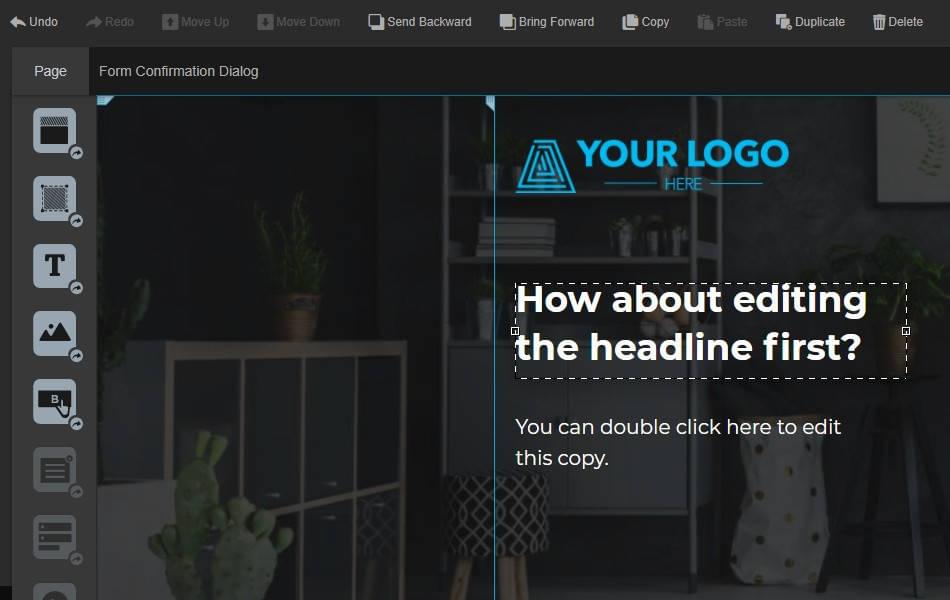
Unbounce is a comprehensive solution that offers support, training, and statistics reports, and a free trial with plans starting from $72 per month.
These are some similar options:
Following the success of your landing page, potential customers will be clamoring for more information about your incredible product.
A web-building application can get your site up and running with a custom domain in a few hours. It helps to have a flair for design and a little web technology knowledge, but most applications can be used by eager business owners to create a professional-looking site.
Web builders typically include a choice of responsive templates, visual drag-and-drop editing, code customization, hosting, support, marketing tools, e-commerce options, usage analytics, and asset management (fonts, images, videos, and so on).
One of the best is Webflow. It includes a sophisticated design tool, content management system, e-commerce integration, and SEO services. You can get started for free, but additional facilities are available for $12 per month. The page designer is simple to learn but remains flexible as your knowledge and requirements grow. The scalable hosting platform serves 4.1 billion page views per month.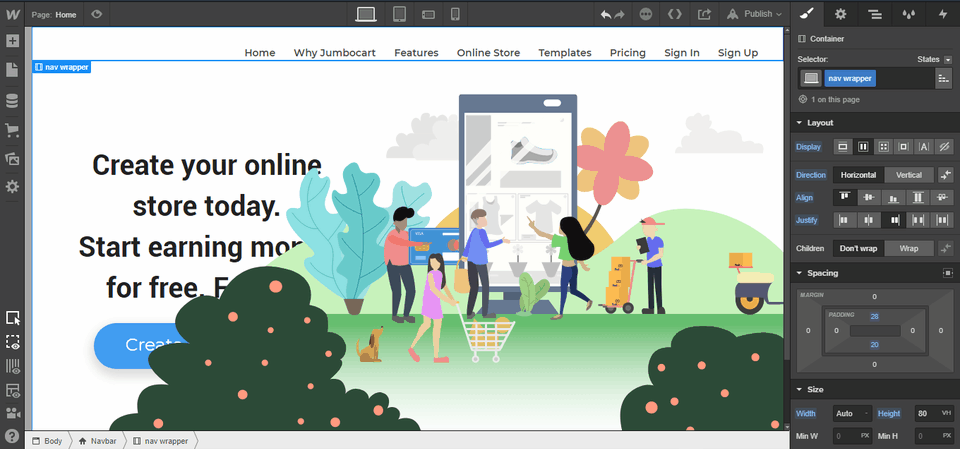
Alternative options include:
Writing articles publicizes your products, raises interest, and builds your Google juice. There’s one obvious option: WordPress.
WordPress is the content management system (CMS) that powers more than 40% of the Web. It’s easy to use, and assistance is plentiful. (Fun fact: Matt Mullenweg, WordPress founder, took his first steps into PHP and MySQL with SitePoint.)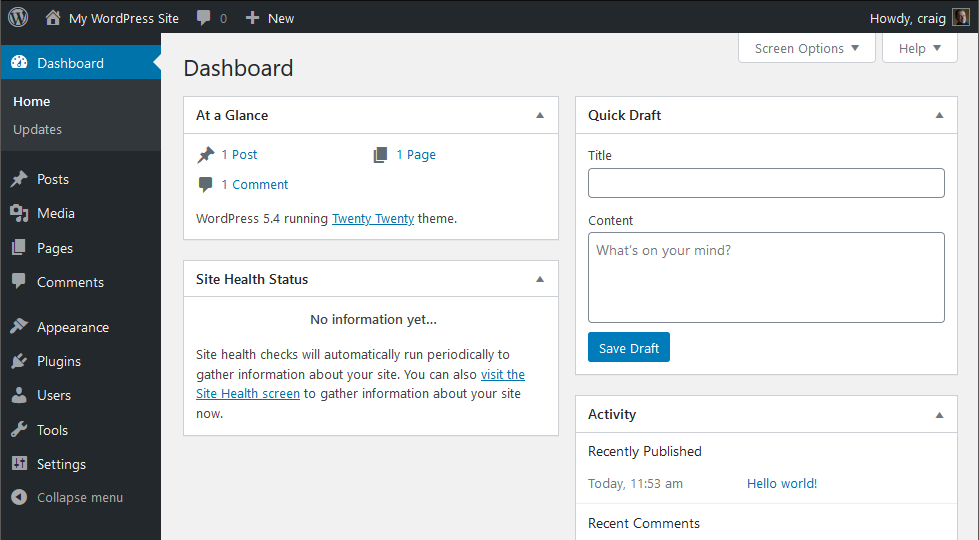
You can start with a free, pre-installed option at WordPress.com, then upgrade to access features such as custom themes and plugins for a few dollars per month.
Alternatively, you can download the application from WordPress.org and install it on any host offering PHP and MySQL support. (Many provide a one-click installation process.) Hosting charges will vary and you may require some development assistance, but you’re free to configure the application any way you choose.
WordPress started as a blogging platform, but it’s evolved far beyond its roots. You can find themes and plugins to enable e-commerce, membership subscriptions, social media, newsletters, events calendars, booking systems, form builders, image galleries, video hosting, discussion forums, design templates, and much more.
Despite its dominance, alternative blogging options are available:
Most of the web-building platforms above offer e-commerce facilities or plugins. These are fine for a few products, but a dedicated online shopping system can provide a more focused e-commerce service. This will be more practical when you’re selling a wider range of products.
Advanced ecommerce features often include inventory management, point of sale systems, shipping processes, accounts integration, worldwide currencies, fraud protection, sales tax reporting, and more.
The most popular online solution is Shopify, which serves more than half a million merchants. The system is simple to set up, with a variety of ecommerce, branding, and marketing tools. Shopify can host your store or you can embed it into an existing website.
Shopify also has a thriving App Store where developers submit free and commercial themes and plugins. Plans start from $29 per month, with additional fees at around 3% per transaction.
There are many more e-commerce options, including these:
Alternatively, you can install, host, manage and maintain one of the many open-source e-commerce applications. PHP options include OpenCart, PrestaShop, and Magento, but be aware that some development knowledge is necessary for installation and configuration.
Most e-commerce solutions handle digital products. However, a few services specialize in subscriptions, ebooks, courses, artwork, music, and video. They often include instant setup, shop pages, newsletters, file hosting, video platforms, license generation, instant delivery, affiliate links, sales tax calculations, and more.
Gumroad is the best known and most popular operator. It’s easy to get started, easily integrates with your own site, can be served from your own domain, handles transactions and global sales taxes, and publicizes items in its own store.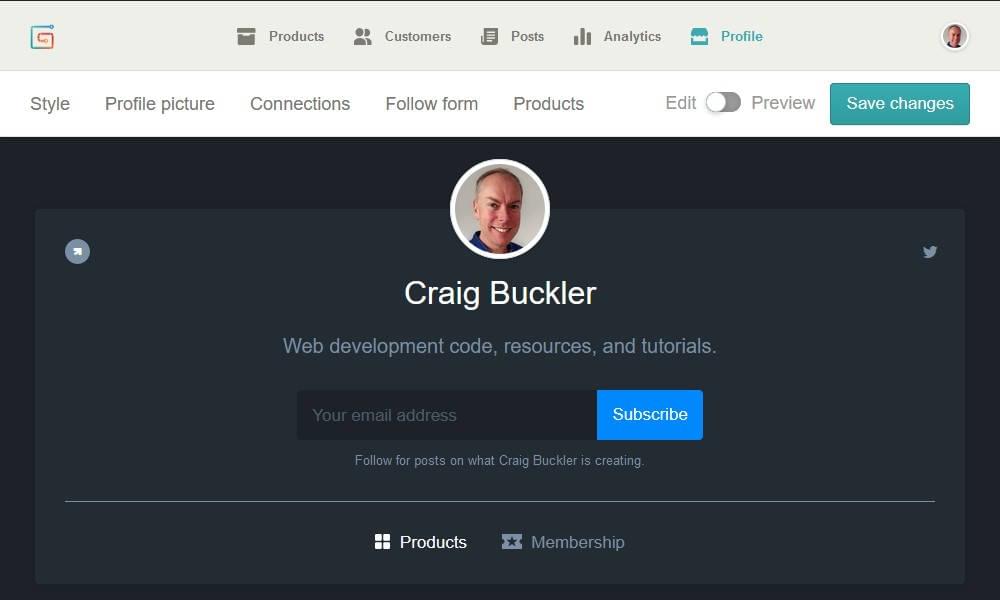
Gumroad charges 5% plus the credit card or PayPal payment fee per transaction. The Creator’s plan for $10 per month permits custom styling, HD-quality video hosting, and reduces the transaction fee to zero.
Here are some alternatives:
If you’re not a developer, building an application from scratch is a slow and expensive process. You must define your idea, convey that to a development team, wait for completion, test the product, then revise and iterate until your dream is fulfilled.
No-code (or low-code) platforms are designed for non-programmers. You can create software through graphical user interfaces rather than a typical development environment. Spreadsheet software (such as Excel, Google Sheets, and LibreOffice Calc) was one of the earliest examples and the concepts remain popular. Modern No-Code applications offer visual drag-and-drop facilities which can produce an interactive website or application in minutes.
Bubble.io is a popular no-code platform used by almost one million people. It includes a comprehensive build tool, where you can customize the interface, connect to data sources, integrate with other services, and scale your application on demand.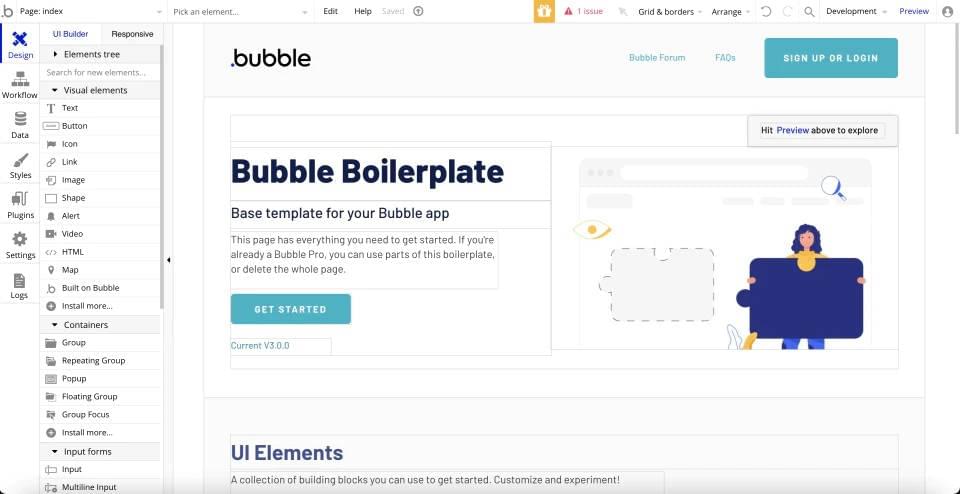
Bubble.io offers exceptional help and up to 40 collaborators can work on the same project. The service provides a free plan with advanced options from $25 per month.
Alternative no-code platforms:
The solutions above may achieve 90% of your objectives, but there will always be bespoke features where no off-the-shelf solution exists. Or perhaps you may want more control and less expense?
Learning to write software is a practical skill you can take to any industry. Once you’ve sold your business for a few billion, you’ll have highly sought-after expertise to use on your own or other client projects in the future.
If you’re starting from scratch, my advice is to keep it simple and progress at your own pace. Learn some HTML and create basic content pages. Advance by adding a little color and styling with CSS. Then sprinkle on some JavaScript functionality when it’s necessary.
A little PHP knowledge will help you update WordPress themes. You could consider using a static site generator. These are developer tools for building sites from templates that can be hosted anywhere. You can learn more about static site generator benefits and disadvantages. Popular options include Eleventy, Gatsby, Hugo, Jekyll, and Metalsmith, but the StaticGen site lists a range of language-specific tools. You can even reap the benefits of SSGs without sacrificing content management tools by pairing them with a headless CMS. For example, you can use Eleventy with headless WordPress.
There’s one obvious place to start your coding journey, and you’re already here. SitePoint has been around since the dawn of the Web. It offers a range of free content (like this guide) and a huge Premium library of courses and books for those who want to learn to code, design, and build products online.
There are plenty of other coding tutorial sites, but they’re not as good. Obviously.
There are many services for creating, managing, and hosting your first website! The best advice for avoiding choice paralysis? Just start. There’s no guarantee you’ll pick a suitable option, but the process of building your new site will help determine which objectives and features are essential for your business idea.
Best of luck, and please remember us when you make your first million!
Craig is a freelance UK web consultant who built his first page for IE2.0 in 1995. Since that time he’s been advocating standards, accessibility, and best-practice HTML5 techniques. He’s created enterprise specifications, websites and online applications for companies and organisations including the UK Parliament, the European Parliament, the Department of Energy & Climate Change, Microsoft, and more. He’s written more than 1,000 articles for SitePoint and you can find him @craigbuckler.
© 2000 – 2022 SitePoint Pty. Ltd.
This site is protected by reCAPTCHA and the Google Privacy Policy and Terms of Service apply.
